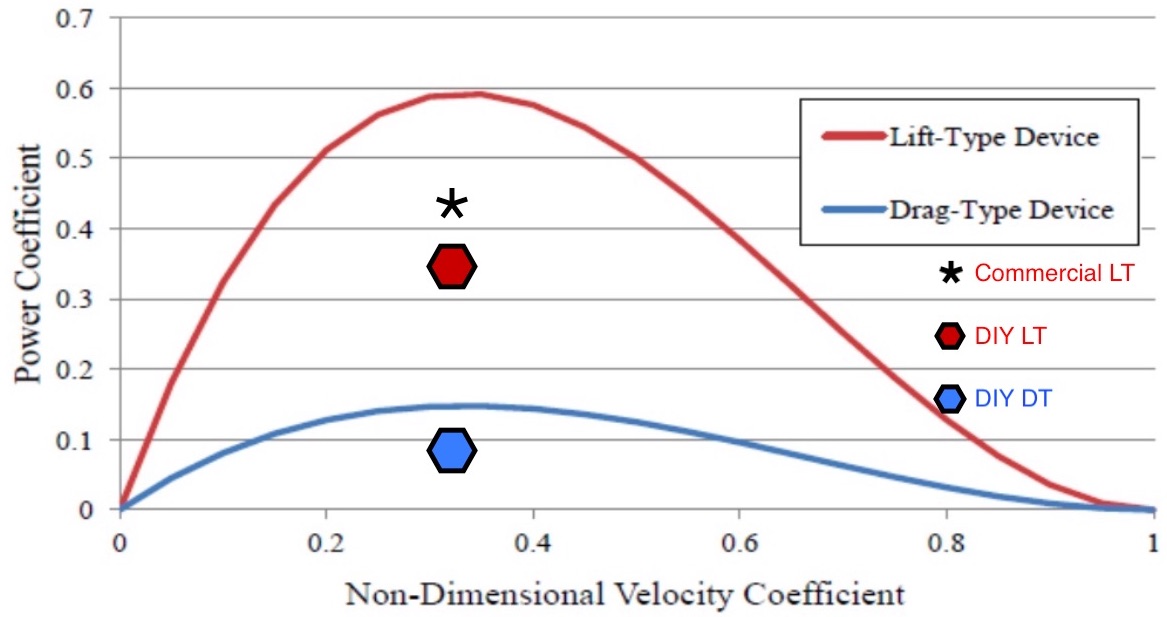Learning from wind-power science:
We know that the Betz limit of 59.3% means that the maximum energy that can be extracted from a moving fluid is limited. Limited by: how quickly the spent energy fluid can be removed out of the way of more fluid coming through the extractor, how much energy is lost to friction in bearings or friction drag, energy losses due to gearing or electrical inefficiencies. Remembering that a 100% efficient alternator, generator, rectifier, inverter or transformer does not exist nor ever will. As we change any form of energy we lose something in the process. As we transport energy over a distance we also lose in the process (super-conductors are far too expensive for the average citizen).
Now when we consider advances in extraction technology:

Here is the difference in efficiency between commercial and DIY technology:

How does the above relate to the subject?
Keep in mind the most efficient wind turbine is an Horizontal Axis type or HAWT. This turbine keeps moving to face into the wind. When there is too much blockage the wind will take the course of least resistance and go around the blockage. Likewise a shelter break of trees becomes a wind block when it is too thick, causing such turbulence that the dumping effect on the leeward side can do damage. When a wind break has good permeability, it slows down the wind for five times the distance of the height of the trees.
Now if we look upwards from the centre of the orifice, all the water must pass through this orifice like wind in a wind tunnel, so better in effect than an open HAWT, but with more swirl to the current. Yet all the GWVPP sort of commercial turbines used currently are a drag-force type of blade! So it appears that this type of water vortex extraction is still in it's infancy or surely it would have advanced to a lift-force blade? The design needs to be very permeable so that maximum energy can be extracted. As the water is so much more dense than air, it's movement over the foil has the same range of Reynolds numbers as a heavy-lift freighter aircraft, glider or long range drone.
“Water has a density of 1000 kg/m^3. If you had a meter cubed of water it would weight about 1000 kg. Air that is near sea level has a density that averages 1.275 kg/m^3. 1000 kg/m^3 divided by 1.275 kg/m^3 yields 784. Therefore, at sea level, air is 784 times less dense than water. Expressed in another way, a volume of air at sea level has 0.1275% of the density of the same volume of water.†Quote from meteorologist Jeff Haby.
A big reason why Pelton type turbines have higher efficiency with high head than other types is the very low pressure area below the buckets. The water is going from high pressure with low volume, to an area of large volume so it can lose the pressure kinetic energy to mechanical power. Water hits the buckets then drops into air space. The Fishway GWVPP has the potential for high efficiency because it has a low pressure column of air at it's centre which becomes absorbed into the draft pool underneath. The device was designed for aeration of waterways before the Austrian engineer realised he could extract power by suspending a turbine in the centre.
Next we should have a look at Tip Speed Ratio (TSR) and how that has effect on this design.
Rgds, Nat